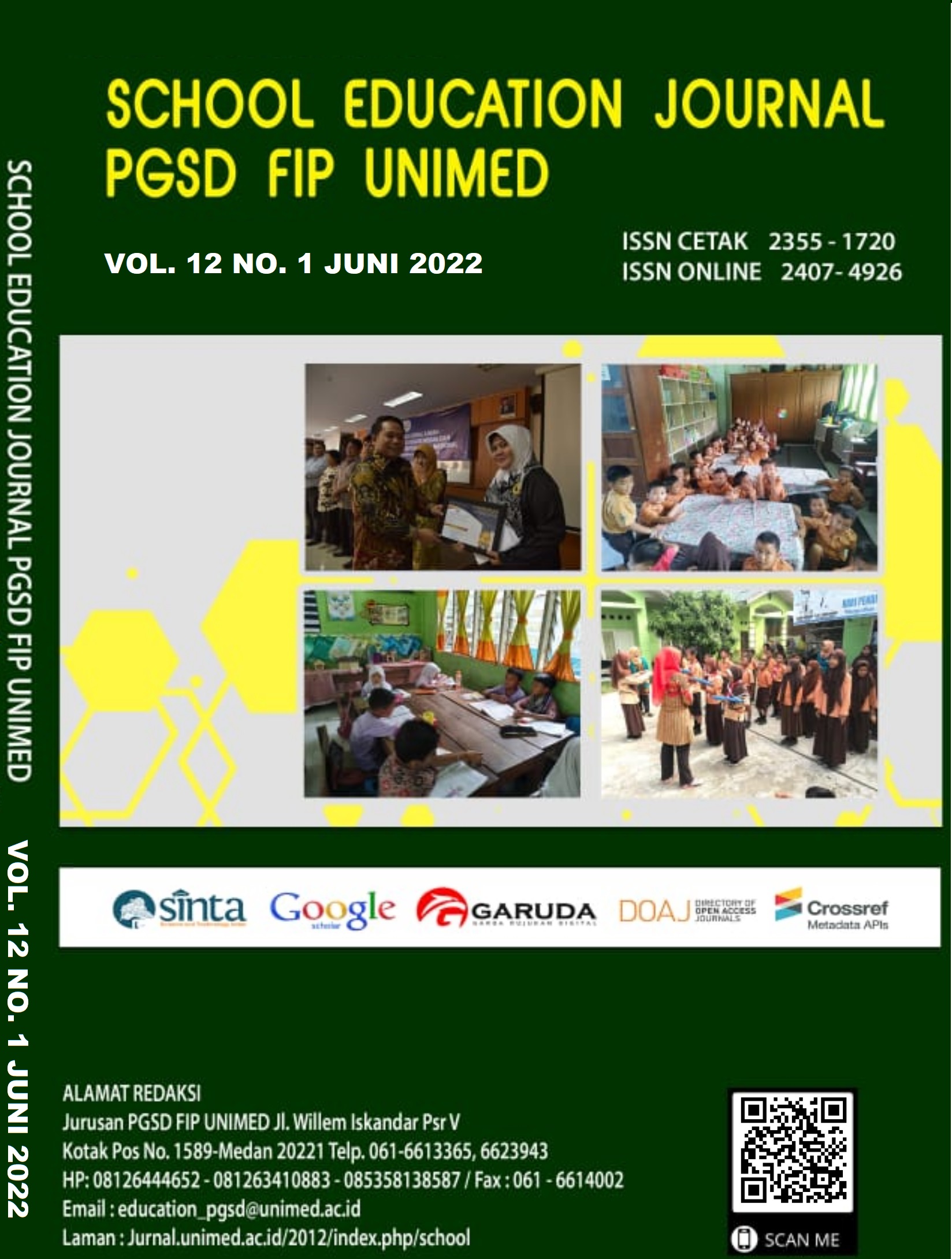IMPROVING THE STUDENTS™ SPEAKING ACHIEVEMENT BY APPLYING THE STUDENTS TEAM ACHIEVEMENT DIVISION AT CLASS XI MIA 2 OF SMA NEGERI 6 MEDAN
DOI:
https://doi.org/10.24114/sejpgsd.v12i1.34143Keywords:
Action Research, Speaking Achievement, Student Team Achievement Division (STAD).Abstract
This study aims to improve the ability to speak English in students in Medan. In this study, research data collection techniques used observation, interviews and documentation methods. The data sources for this study were students at SMA Negeri 6 Medan in class XI MIA2. By applying the Student Team Achievement Division learning model and using dialogue media. the research instrument is test, observation sheet, interview (Classroom Acton Research) . This study uses a qualitative and quantitative design. The research data analysis technique uses three steps, namely 1. Data reduction, 2. Data presentation, 3. Making conclusions. Findings from data analysis, Before applying the Studnet Team Achievement Division (STAD) learning model, there were 30 students (96%) who did not complete with a score of 44.46-66.67. and 6 (4%) students 78.78 - 88.89 completed with grades. And after applying the Student Team Achievement Division (STAD) learning model, in the first cycle there were 35 students (99%) who scored 78.78. 88.89 this value has exceeded the KKM score of 75% and 1 student (1%) did not complete. There was an increase of 26.15. The conclusion is that the application of the Student Team Achievement Division learning model is very effective in improving students' speaking skills.References
Anwari, R., Syakir, A., & Yunus, M. 2017. Improving Speaking Ability Using Cooperative Learning Model Type STAD Students Class X IIS 5 SMA Negeri 2 Banjarmasin.
Bailey. 2005. Get Along with English for Vocational School Grade IX Intermediate Level. Erlangga.
Bhoke, W. 2016. The Influence of the Cooperative Learning Model Type Student Teams Achievement Division (STAD) and Learning Motivation on Mathematics Learning Outcomes of Class V Elementary School Cluster 2 Elementary Schools. Bajawa District, Ngada-Flores Regency. http://ejournal.stkip.ac.id
Dewi. 2011. Improving Student™s Skill Through Dialogue (An Action Research Conducted At The Tenth Year Students of SMA N 1 Teras, Boyolali Of The Academic Year 2010/2011).
Hamdayama, J. 2004. Model and Method Learning Creative and Characters. Ghalia Indonesia.
Laa, N., Winata, H., & Meilani, R. I. 2017. Effect of Cooperative Learning Model Type Student Teams Achievement Division on Student Interest in Learning. Journal of Office Management Education, 2(2), 139“148. http://ejournal.upi.edu/index.php/jpmanper/article/view/00000.
Putri. 2014. The Effectiveness Of Using The Student™s Team Achievement Division (STAD) Technique Toward Student™s Understanding Of The Simple Past Tenses (A Quasi- Experimental Study at the English Grade Students of SMP Trimulia. Jakarta Selatan.
Saddhono, K. d. 2012. The Improving Skill Language Indonesia (Theory and Application).
Sardiman. 2008. Teaching and Learning Interaction and Motivation. Raja Grafindo Persada.
Downloads
Published
Issue
Section
License
Authors whose manuscripts are approved are approved as follows:
The publication rights for all journal manuscript materials published/published on the SEJ (School Education Journal) E-Journal site are held by the editorial board with the author's knowledge (moral rights remain with the manuscript authors).
The formal legal requirements for accessing this electronic digital journal article are subject to the terms of the Creative Commons Attribution-ShareAlike (CC BY) license, which means that E-Journal SEJ (School Education Journal) has the right to store, transfer media/format, manage in the form of a database, maintain, and publish articles without asking permission from the author as long as the author's name remains as the copyright owner.
Manuscripts published/published electronically are open access for educational, research, and library purposes.

